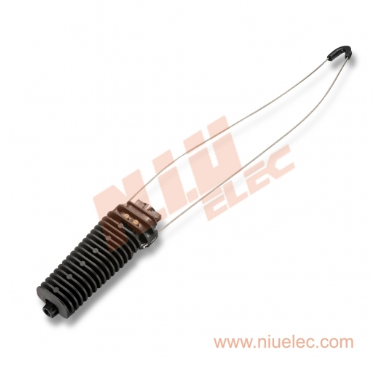Picking the Right Insulation Piercing Connectors for Your Project

Insulation Piercing Connectors (IPCs) are crucial for joining electrical conductors without the demand to remove the insulation.
These little yet essential parts play a significant duty in guaranteeing a secure and reliable electric connection. Selecting the appropriate IPCs for your project can be the distinction between a successful setup and a potential source of electric failure. Here's how you can ensure you're making the very best decision when it comes to insulation piercing ports.
Elements to Consider When Picking Insulation Piercing Connectors
Prior to you hurry into buying IPCs, it's crucial to take into consideration the context in which they will be utilized. Size, material, and the designated application ought to all affect your decision-making process.
cable connector types that fits the conductor you're collaborating with-- IPCs come in different dimensions to fit various cable assesses. The material needs to be chosen based upon environmental elements such as temperature, moisture, and chemical exposure. For exterior applications, UV resistance may be a consideration.
You'll additionally intend to make certain the IPC is ranked for the proper voltage used in your system. Last but not least, consider the form of the port and whether it will certainly fit well in the units and pathways within your installation.
Compatibility Matters: Making Certain Correct Fit and Capability
Compatibility is crucial when selecting IPCs. They require to make certain a tight seal when piercing the insulation to avoid dampness ingress and keep the honesty of the electrical link. Inspect that the diameter of the connector aligns with the insulation density and that the piercing aspects are sharp adequate to pass through without harming the cable.
On top of that, IPCs need to work with the conductor's material. Light weight aluminum and copper, as an example, call for connectors that are particularly developed to collaborate with their distinct buildings. An inequality might lead to galvanic rust and minimized link efficiency.
Efficiency Metrics: Examining Resilience and Electrical Conductivity
IPC efficiency depends on a number of essential metrics. The first is sturdiness-- IPCs need to be able to endure mechanical anxiety, resonance, and the environment without shedding their electrical performance.
Electric conductivity is one more critical facet. Look for IPCs that use low contact resistance to lessen energy loss and warmth generation, especially in high-ampacity applications. Product composition and surface finishes are aspects that affect this conductivity and needs to be meticulously taken into consideration.
Personalization Options: Tailoring Insulation Piercing Connectors to Certain Requirements
Sometimes, conventional off-the-shelf IPCs could not fulfill the precise requirements of your task. Customization choices, such as insulator types, wire access angles, and shade coding for recognition, can enhance the suitability of IPCs for your unique demands. Analyze whether any special functions are essential to enhance installment or lasting upkeep.
Practical Installment Tips for Insulation Piercing Adapter Implementation
Lastly, even the very best IPCs are only comparable to their installment. Make certain that your connectors are tightened up to the supplier's specifications to supply the required stress on the conductor.
Before shutting the link, confirm that the insulation is effectively secured which the honesty of the electric connection is maintained. clamp hook and tests ought to be part of your upkeep regimen to find any issues at an early stage.

By taking these variables right into account, you can select insulation piercing adapters that not just fulfill your job's prompt requirements but likewise add to a durable and dependable electrical system for many years to find.
